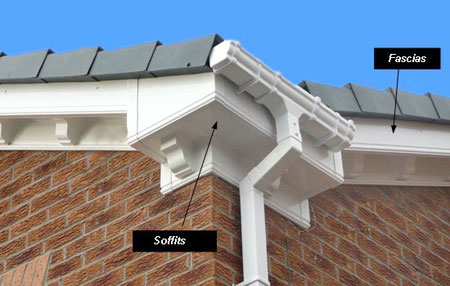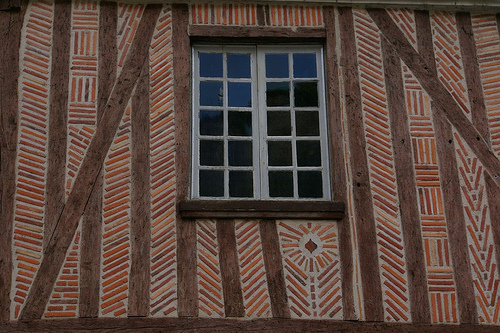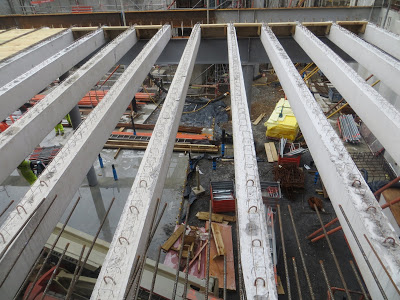Flange Nuts, Spandrels & Dwangs
‘It is not the beauty of a building you should look at; it’s the
construction of the foundation that will stand the test of time.’ – David Allan
Coe.
construction of the foundation that will stand the test of time.’ – David Allan
Coe.
I have been working as an administrator for a construction company in
New Zealand since January. That’s over nine months altogether, eight if you
include May, when I had a month off to go travelling. It’s not what I imagined
I would end up doing when I decided to come to New Zealand, that’s for sure. I
kind of had more romantic ideas about grape picking and Kiwi fruit harvests,
but I needed money when I arrived in Wellington and office work pays quite
well, so I rolled with that. It’s what I know best after all!
New Zealand since January. That’s over nine months altogether, eight if you
include May, when I had a month off to go travelling. It’s not what I imagined
I would end up doing when I decided to come to New Zealand, that’s for sure. I
kind of had more romantic ideas about grape picking and Kiwi fruit harvests,
but I needed money when I arrived in Wellington and office work pays quite
well, so I rolled with that. It’s what I know best after all!
Since taking up this position, I’ve learnt a hell of a lot about the
construction industry. Working here on site is also where I’ve spent a large amount of my time in the past few months, so it seems only right
to dedicate at least one blog post to this job – I’d be missing out a key
element of my trip to New Zealand if I didn’t mention it at all on my blog.
construction industry. Working here on site is also where I’ve spent a large amount of my time in the past few months, so it seems only right
to dedicate at least one blog post to this job – I’d be missing out a key
element of my trip to New Zealand if I didn’t mention it at all on my blog.
One of my favourite things about my job is the new terminology I’m
learning. Some of the words are downright hilarious and I can’t help but giggle
to myself when I hear them spouted on an almost daily basis in the office in
truly earnest voices as my colleagues discuss important things to do with the
construction that is being undertaken here. Call it childish, but I just love
the fact that you could make up all sorts of references to other things just by
using every day construction terms.
learning. Some of the words are downright hilarious and I can’t help but giggle
to myself when I hear them spouted on an almost daily basis in the office in
truly earnest voices as my colleagues discuss important things to do with the
construction that is being undertaken here. Call it childish, but I just love
the fact that you could make up all sorts of references to other things just by
using every day construction terms.
So, in the interest of sharing a glimpse into my everyday life here in
New Zealand, and in hopefully providing you with a couple of laughs, I’ve
compiled a short list of my favourite words that I’ve heard since coming into
the construction industry. Here goes!!
New Zealand, and in hopefully providing you with a couple of laughs, I’ve
compiled a short list of my favourite words that I’ve heard since coming into
the construction industry. Here goes!!
Flange Nuts
These have a wide ridge at the end that act as an integrated,
non-spinning washer. This in turn distributes the pressure of the nut over the
part being secured, reducing the chance of damage and making it less likely to
loosen in the future. Flange just sounds plain rude to me – anyone else agree?!
non-spinning washer. This in turn distributes the pressure of the nut over the
part being secured, reducing the chance of damage and making it less likely to
loosen in the future. Flange just sounds plain rude to me – anyone else agree?!
Above: a selection of flange nuts!!
Soffit
This is another word for ‘eaves’ – the flat section on the underside
would be referred to as a soffit. This term can be used to describe the
underside on other architectural features too, such as beams, arches, ceilings
and cornices.
would be referred to as a soffit. This term can be used to describe the
underside on other architectural features too, such as beams, arches, ceilings
and cornices.
Above: the spandrel is the flat part underneath, as shown by the arrow
Spandrel
As I understand it, a spandrel is the space between two windows, one
above the other. Or the picture below with an arrow might help explain it
better. Who knew this space had a name?! I always just called it ‘the bit
between the windows’ before… If I even mentioned it at all!
above the other. Or the picture below with an arrow might help explain it
better. Who knew this space had a name?! I always just called it ‘the bit
between the windows’ before… If I even mentioned it at all!
Above: the green bits between the windows are spandrels.
Nogging / Dwang
Both bloody excellent words that really amuse me!! Dwang is the New
Zealand term for a nogging, which is the process of filling the space between
timber framing members with bricks. You could really come up with some
excellent innuendos if you put some of these words together (think ‘putting
your dwang in my flange nut for a nogging’ and try not to smile…).
Zealand term for a nogging, which is the process of filling the space between
timber framing members with bricks. You could really come up with some
excellent innuendos if you put some of these words together (think ‘putting
your dwang in my flange nut for a nogging’ and try not to smile…).
Above: an example of nogging
Ribs
Nope, not the sort you have in your body to protect your vital organs.
When everyone first started banging on about ribs in the building structure, I
imagined them to be made of metal and be quite thin and spangly – a bit like the
ribs in our body, really. They aren’t thin or spangly. They’re actually made of
reinforced concrete and look like this:
When everyone first started banging on about ribs in the building structure, I
imagined them to be made of metal and be quite thin and spangly – a bit like the
ribs in our body, really. They aren’t thin or spangly. They’re actually made of
reinforced concrete and look like this:
Above: a photo from our site, showing the reinforced concrete ribs being put in place…
And All The Men…
When you’re on site, there are all sorts of men. In fact, I’m the only
woman working on site – in my office this means I directly work with 14 or so
guys and then there’s about fifty male sub-contractors on site at any one time.
Obviously, they all need to have different names so that we can tell them
apart…
woman working on site – in my office this means I directly work with 14 or so
guys and then there’s about fifty male sub-contractors on site at any one time.
Obviously, they all need to have different names so that we can tell them
apart…
The Dogman: this is the guy who works with the crane driver to unload
materials from trucks and move heavy objects / plant around site as necessary.
He stands on the ground and directs the load to where it is supposed to go, all
the while trying to avoid letting the load hit him or anyone else on site. Hard
hats are a must!!
materials from trucks and move heavy objects / plant around site as necessary.
He stands on the ground and directs the load to where it is supposed to go, all
the while trying to avoid letting the load hit him or anyone else on site. Hard
hats are a must!!
The Backsman: he stands behind vehicles and helps to guide them whilst in
reverse with wild gesticulation and windmill like arms, all the while trying to
avoid getting himself or anyone else for that matter run over by said vehicle
as it inches backwards.
reverse with wild gesticulation and windmill like arms, all the while trying to
avoid getting himself or anyone else for that matter run over by said vehicle
as it inches backwards.
The Gateman: this guy guards the gate. It’s pretty self-explanatory. He stands
by the site entrance and importantly directs pedestrians safely to the other
side of the gate. Occasionally, when a truck arrives to deliver a load, he
importantly stops pedestrians from going about their daily business until it is
safe to do so and said truck has departed once more. On a serious note, safety
on site is key.
by the site entrance and importantly directs pedestrians safely to the other
side of the gate. Occasionally, when a truck arrives to deliver a load, he
importantly stops pedestrians from going about their daily business until it is
safe to do so and said truck has departed once more. On a serious note, safety
on site is key.
The Other Men: and then there is everyone else. They do other jobs, like pouring
concrete, excavation, installing drainage and services, fixing reo and putting
up scaffolding. All the jobs that you need to do, really, to construct a building.
concrete, excavation, installing drainage and services, fixing reo and putting
up scaffolding. All the jobs that you need to do, really, to construct a building.
Yes, I’ve been a bit tongue-in-cheek here but if you really delve into any
new job (be it in politics, child protection, waste or construction – the key
areas I’ve worked in so far since finishing uni), there’s definitely always
something you can learn and take away from the role. You may even surprise
yourself by really starting to get interested in it all too – even if it’s not
something you ever imagined you’d end up doing, like me!
new job (be it in politics, child protection, waste or construction – the key
areas I’ve worked in so far since finishing uni), there’s definitely always
something you can learn and take away from the role. You may even surprise
yourself by really starting to get interested in it all too – even if it’s not
something you ever imagined you’d end up doing, like me!
Share





